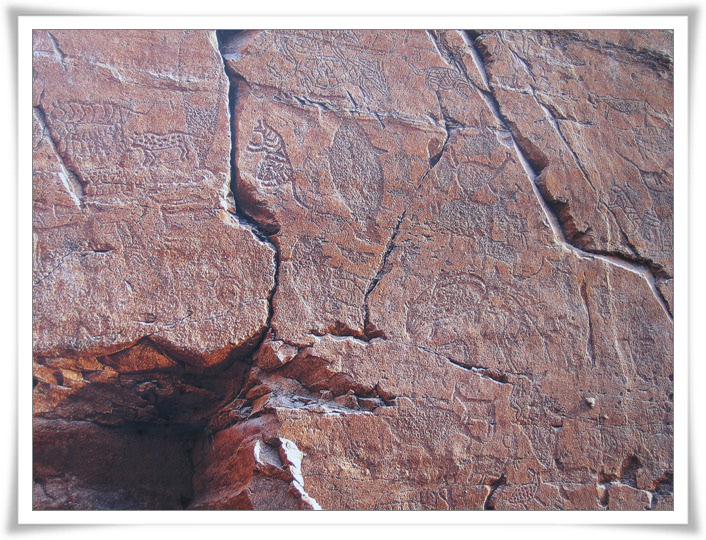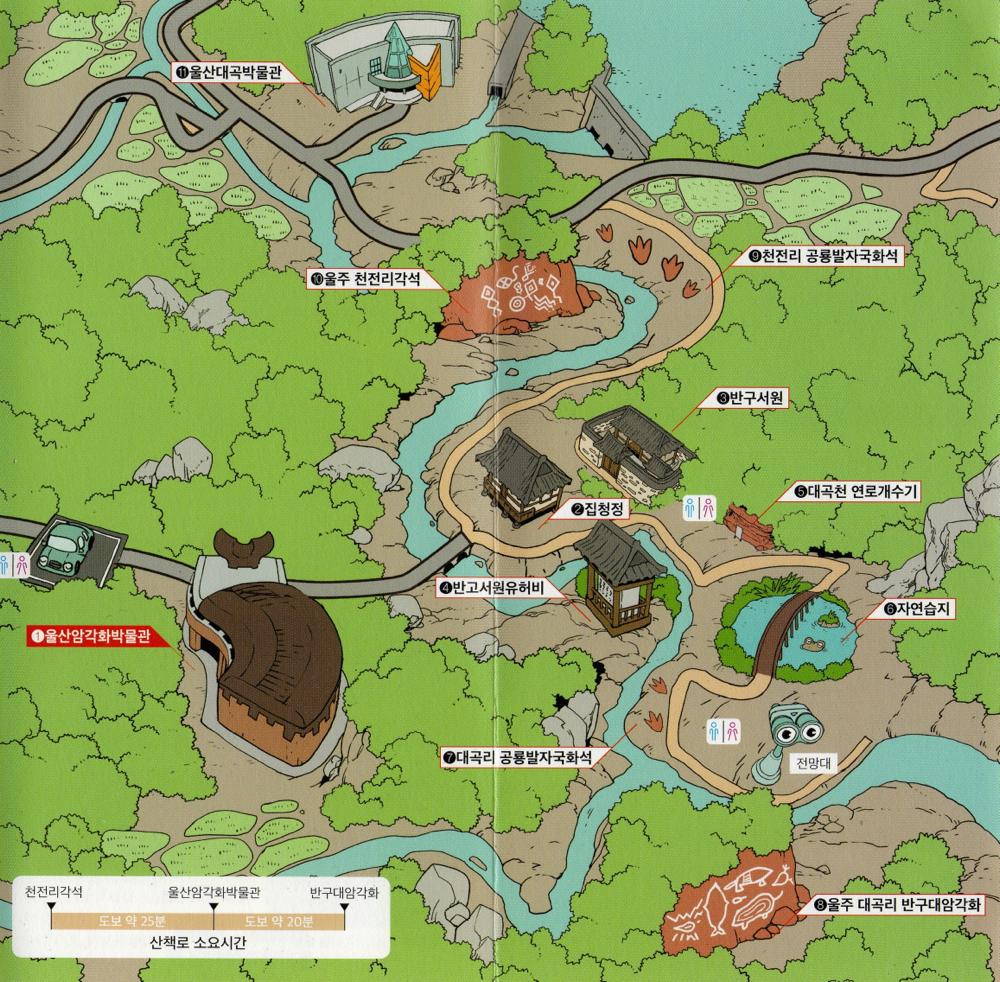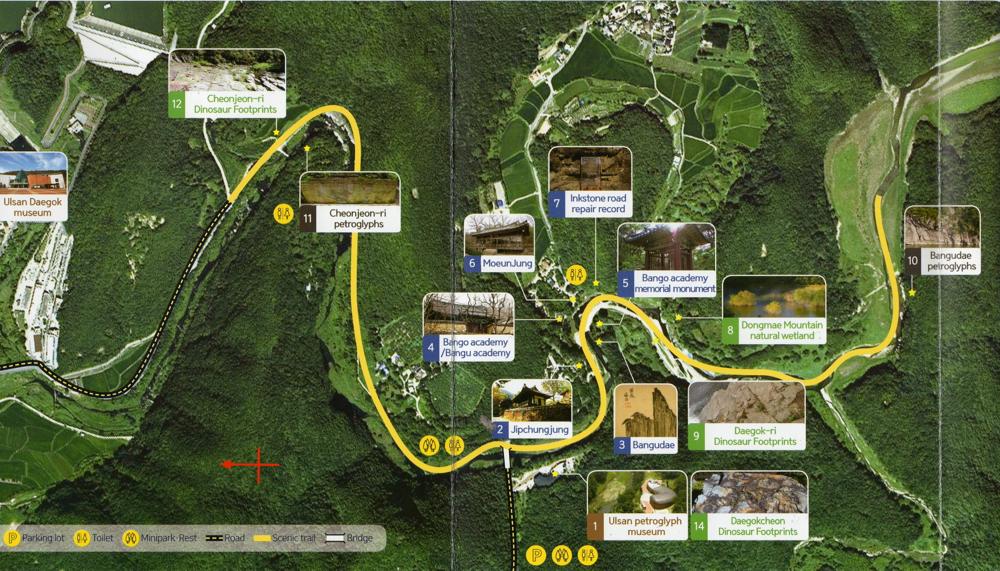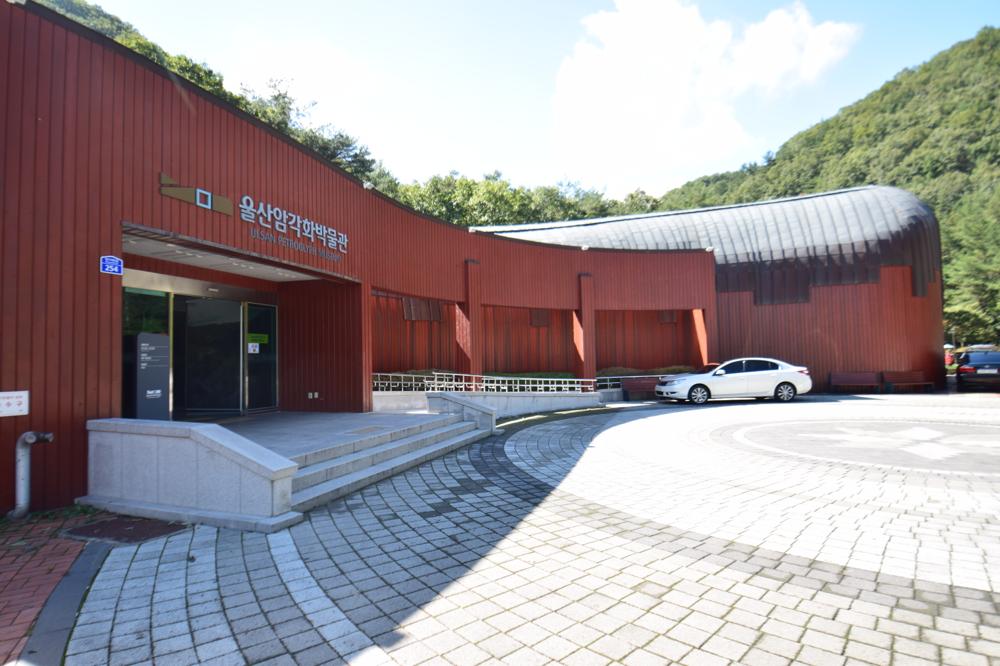<< Our Photo Pages >> Bangudae Petroglyphs - Rock Art in South Korea
Submitted by AlexHunger on Thursday, 31 January 2008 Page Views: 6509
Rock ArtSite Name: Bangudae Petroglyphs Alternative Name: Pan’gudae Rock ArtCountry: South Korea Type: Rock Art
Nearest Town: Ulsan Nearest Village: Daegok-ri
Latitude: 35.577740N Longitude: 129.177080E
Condition:
| 5 | Perfect |
| 4 | Almost Perfect |
| 3 | Reasonable but with some damage |
| 2 | Ruined but still recognisable as an ancient site |
| 1 | Pretty much destroyed, possibly visible as crop marks |
| 0 | No data. |
| -1 | Completely destroyed |
| 5 | Superb |
| 4 | Good |
| 3 | Ordinary |
| 2 | Not Good |
| 1 | Awful |
| 0 | No data. |
| 5 | Can be driven to, probably with disabled access |
| 4 | Short walk on a footpath |
| 3 | Requiring a bit more of a walk |
| 2 | A long walk |
| 1 | In the middle of nowhere, a nightmare to find |
| 0 | No data. |
| 5 | co-ordinates taken by GPS or official recorded co-ordinates |
| 4 | co-ordinates scaled from a detailed map |
| 3 | co-ordinates scaled from a bad map |
| 2 | co-ordinates of the nearest village |
| 1 | co-ordinates of the nearest town |
| 0 | no data |
Internal Links:
External Links:

The most famous prehistoric engravings in Korea. There a lot lot lot of whales, a herd of deer, tigers and mountain pigs as well as a figure of a human.
There are two stories about its age.
One of them, is that it was inscribed in Bronze age about 1000 BCE. But, there is a new theory that it was inscribed in Neolithic and that it goes back to almost 5000-6000 BCE.
It is about 26km from sea, which may tell you something about sea levels.
Research provided by Tom Lee
Designated as No. 285 of National Treasure More at http://en.wikipedia.org/wiki/Bangudae_Petroglyphs
You may be viewing yesterday's version of this page. To see the most up to date information please register for a free account.



Do not use the above information on other web sites or publications without permission of the contributor.
Nearby Images from Flickr






The above images may not be of the site on this page, but were taken nearby. They are loaded from Flickr so please click on them for image credits.
Click here to see more info for this site
Nearby sites
Click here to view sites on an interactive map of the areaKey: Red: member's photo, Blue: 3rd party photo, Yellow: other image, Green: no photo - please go there and take one, Grey: site destroyed
Download sites to:
KML (Google Earth)
GPX (GPS waypoints)
CSV (Garmin/Navman)
CSV (Excel)
To unlock full downloads you need to sign up as a Contributory Member. Otherwise downloads are limited to 50 sites.
Turn off the page maps and other distractions
Nearby sites listing. In the following links * = Image available
11.0km SE 125° 성산 Burial Chamber or Dolmen
12.8km S 186° Eunhyeon-ni cheokseokchong* Chambered Cairn
12.9km ENE 70° 판구대 Burial Chamber or Dolmen
17.7km NE 55° KwanMon Sang* Hillfort
17.8km N 359° Ansim-ni petroglyph* NOT SET
20.5km NE 49° Wonwon-sa temple* Ancient Temple
20.6km N 2° King Gyeongdeog mausoleum* Round Barrow(s)
21.6km N 7° Yangjang-ri dolmen* Burial Chamber or Dolmen
24.0km NNE 32° King Wonseong mausoleum* Round Barrow(s)
24.8km NNE 26° Gujeong-dong BanghyeonGubun* Barrow Cemetery
25.1km NNE 22° King Seongdeog mausoleum* Round Barrow(s)
25.7km N 7° Poseokjeong* Sculptured Stone
27.5km N 2° King Muyeol mausoleum* Barrow Cemetery
28.0km NNE 12° Queen Seongdeok mausoleum* Round Barrow(s)
28.2km NNE 12° Neungji-tap* Pyramid / Mastaba
28.3km N 7° Gyodong sokdap* Ancient Temple
28.4km N 9° Gyeongju National Museum* Museum
28.7km N 8° Wolseong castle* Ancient Palace
28.8km N 8° CheomSongDae* Broch or Nuraghe
28.9km N 9° Wolji* Ancient Palace
28.9km NNE 12° Hwangbok-sa temple* Ancient Temple
29.6km N 10° Kuhwang-dong stone pillars* Sculptured Stone
29.6km N 10° Bunhwang-sa temple* Ancient Temple
29.9km N 2° General Gim Yusin tomb* Round Barrow(s)
30.0km S 191° CheolMa seondol* Standing Stone (Menhir)
View more nearby sites and additional images



 We would like to know more about this location. Please feel free to add a brief description and any relevant information in your own language.
We would like to know more about this location. Please feel free to add a brief description and any relevant information in your own language. Wir möchten mehr über diese Stätte erfahren. Bitte zögern Sie nicht, eine kurze Beschreibung und relevante Informationen in Deutsch hinzuzufügen.
Wir möchten mehr über diese Stätte erfahren. Bitte zögern Sie nicht, eine kurze Beschreibung und relevante Informationen in Deutsch hinzuzufügen. Nous aimerions en savoir encore un peu sur les lieux. S'il vous plaît n'hesitez pas à ajouter une courte description et tous les renseignements pertinents dans votre propre langue.
Nous aimerions en savoir encore un peu sur les lieux. S'il vous plaît n'hesitez pas à ajouter une courte description et tous les renseignements pertinents dans votre propre langue. Quisieramos informarnos un poco más de las lugares. No dude en añadir una breve descripción y otros datos relevantes en su propio idioma.
Quisieramos informarnos un poco más de las lugares. No dude en añadir una breve descripción y otros datos relevantes en su propio idioma.